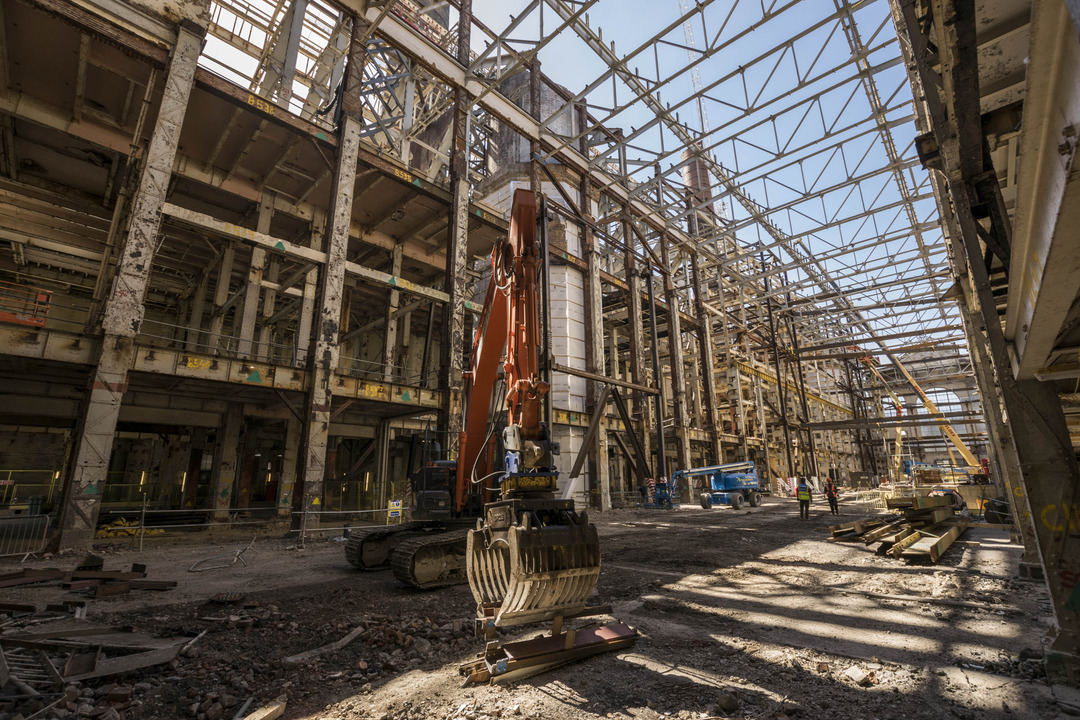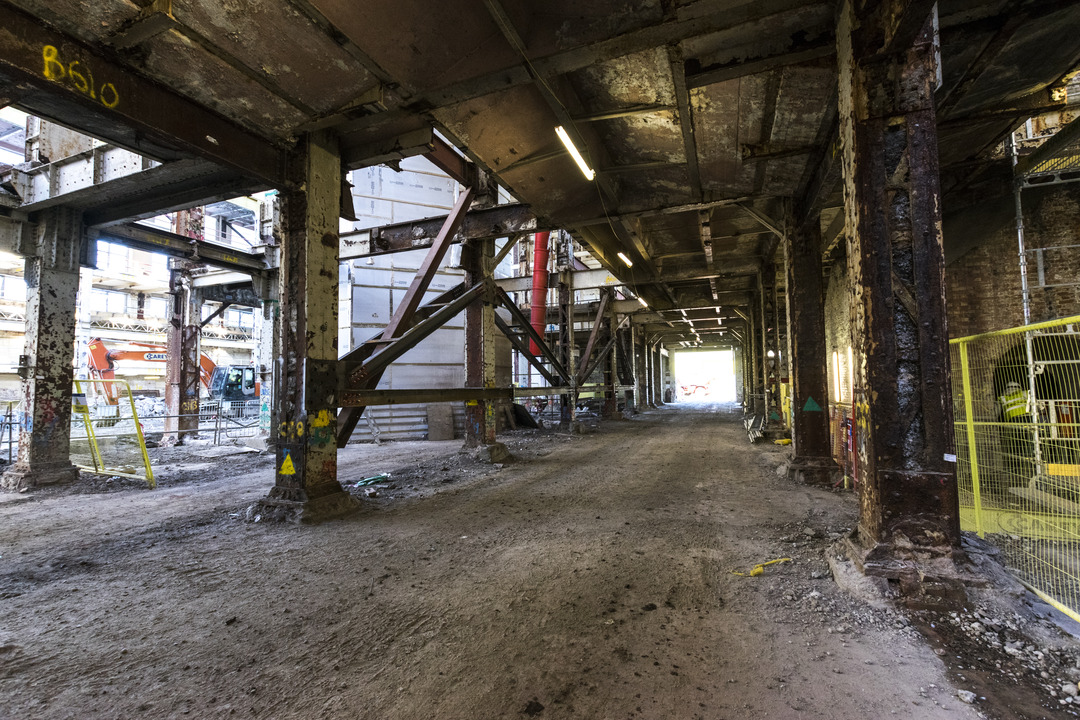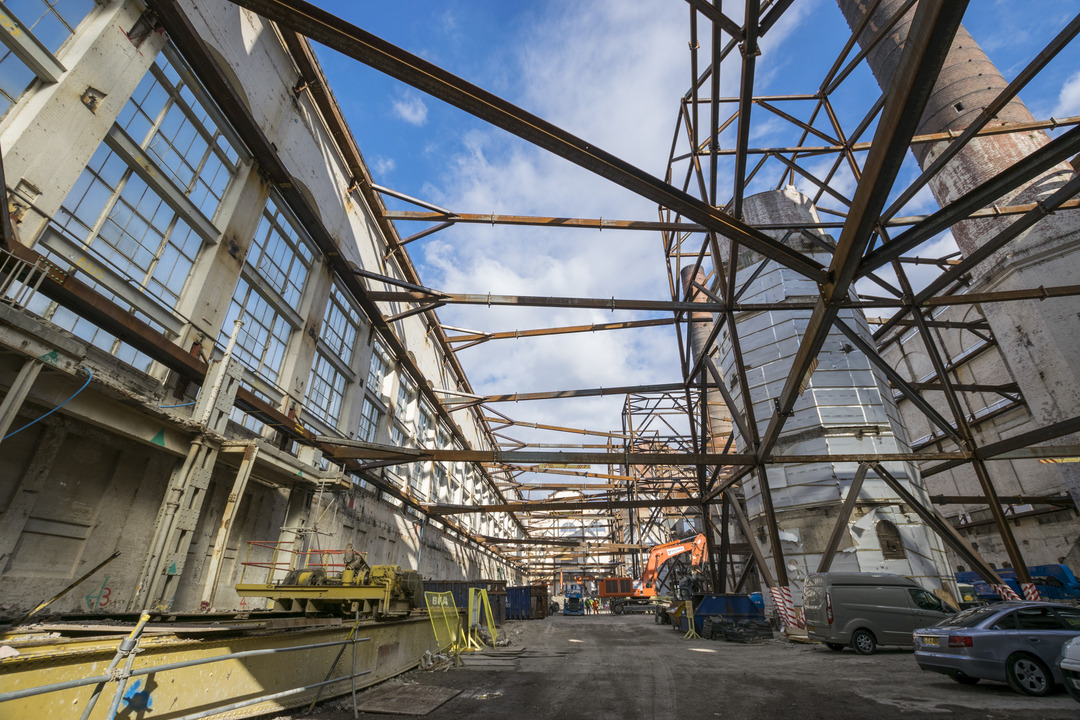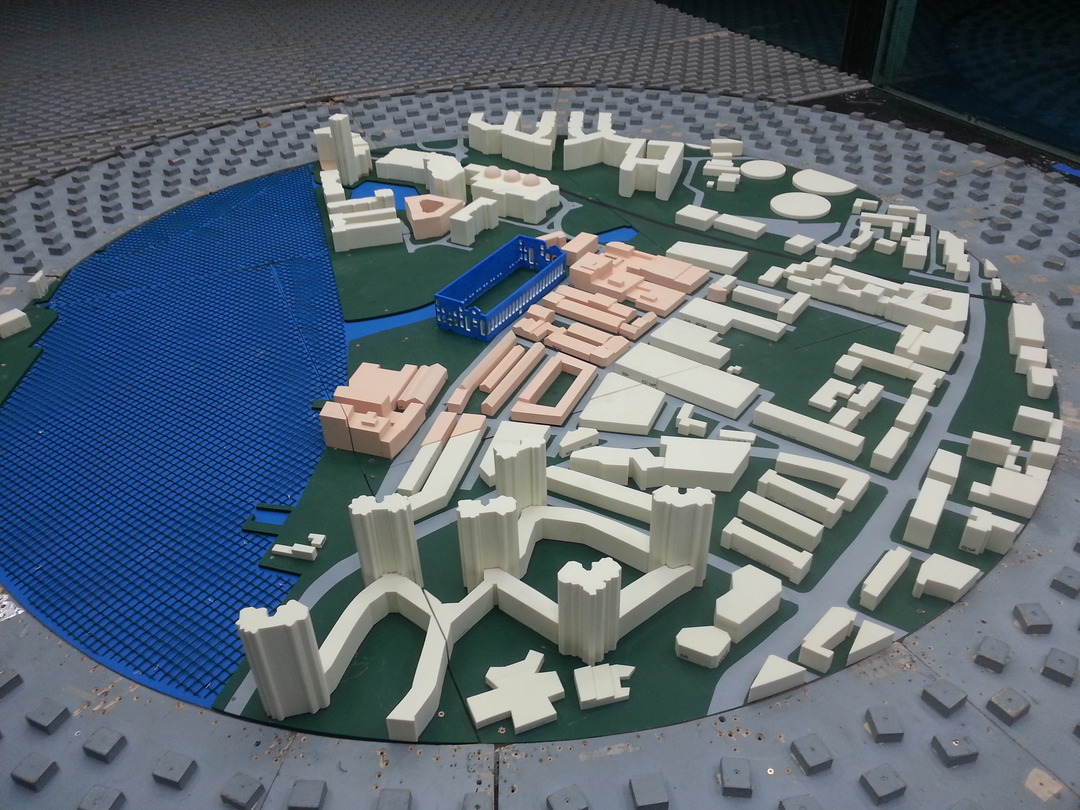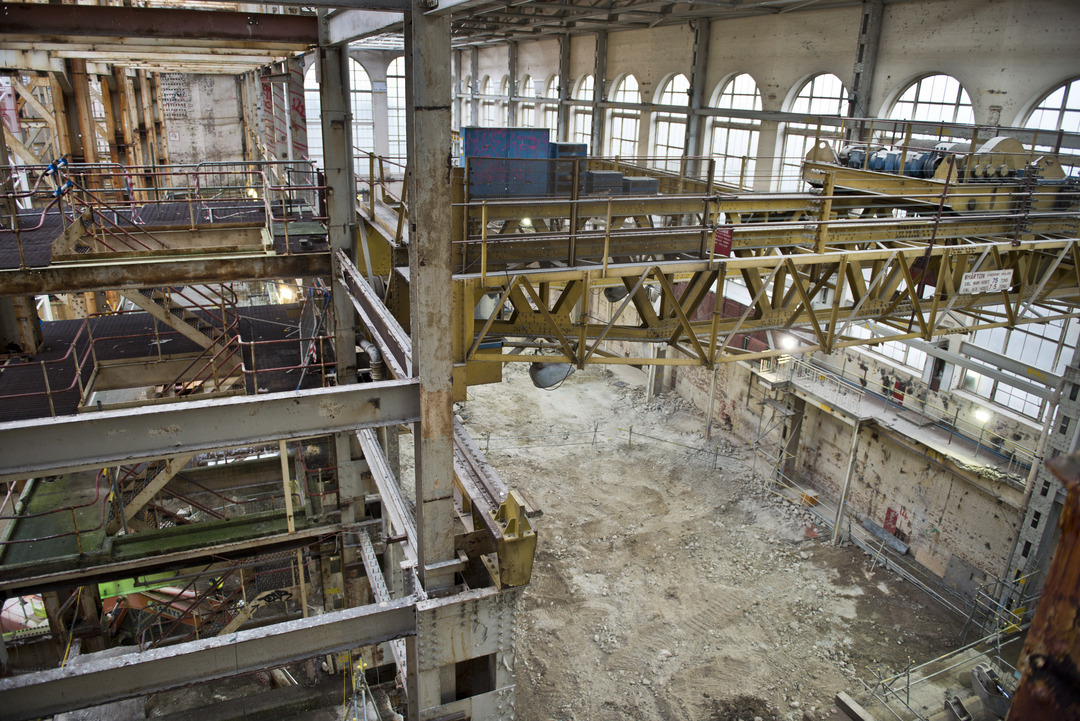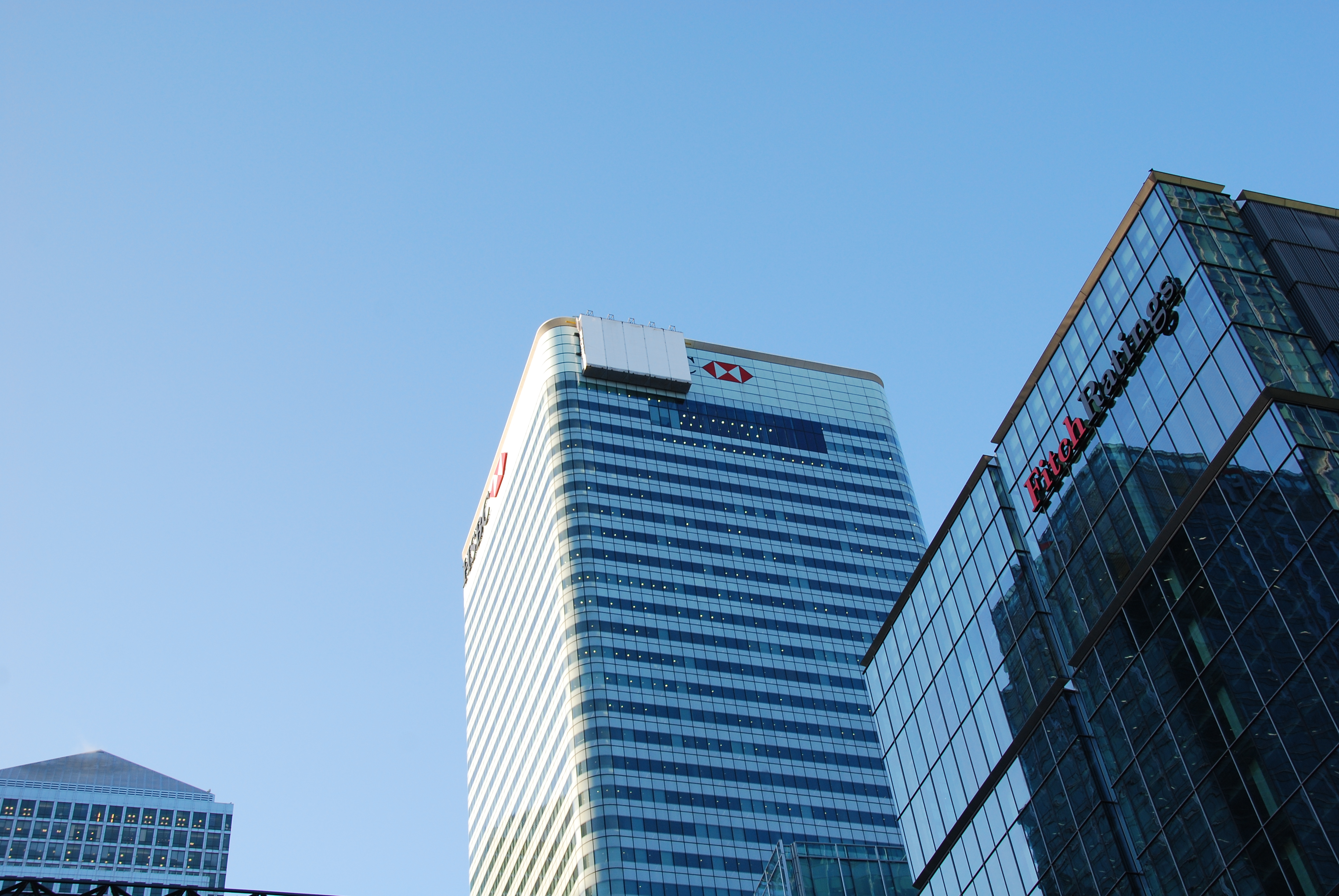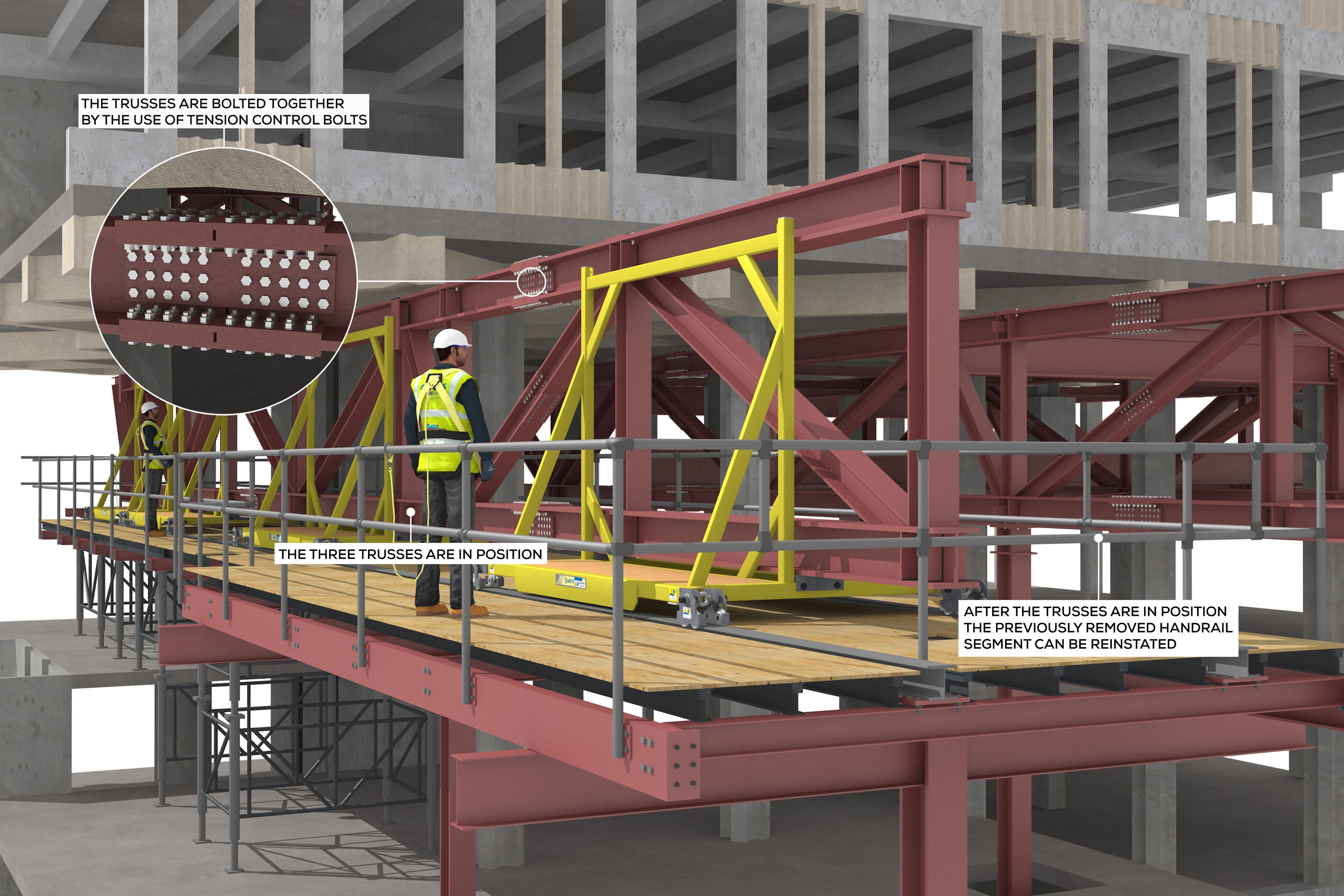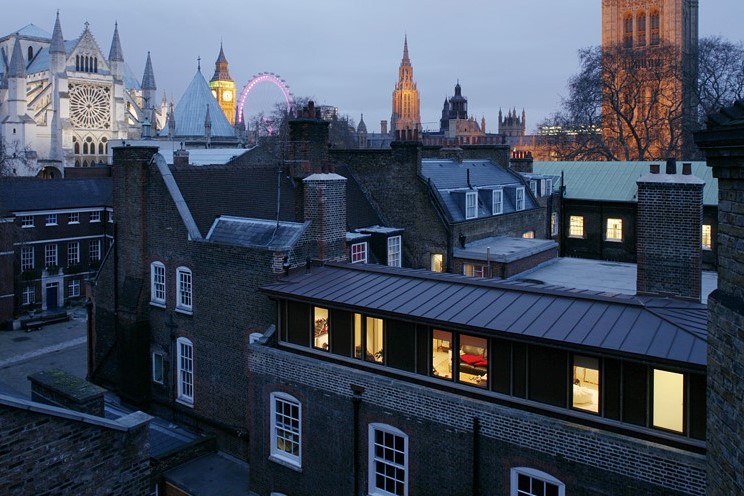Lots Road Power Station
Before works began, an in-depth understanding of the existing structure by using 3D Cloud Modelling to create a model of the steelwork. We then used this information to create a BIM model for easy editing and sequencing of a methodology, and carried out a desk study of the structure to understand its history and any modifications. This work was crucial to enable development of the site, particularly the underground sections of the building, which had been difficult to explore. Cambell Brown Engineers began by considering how the final proposed structure would ideally be built. To do this we created a virtual construction plan and logistics strategy that worked within all perimeter walls and around the two large chimneys. This identified that the central atrium was key to the build of the proposed structure and any façade retention should have a minimal foot print in this area.
Cambell Brown Engineers used the BIM model they created of the existing structure and combined this with the BIM model of the proposed structure from the Structural Engineers, and developed a concept design that coordinated with both structures at each point in time. The 150m long building had the 30m high walls and would ultimately have no roof.
This unusual structure would have complicated wind loadings that needed to be better understood. A wind tunnel test was carried out to accurately model the wind loading effects, This highlighted that unusual corner conditions resulted that would not have been identified using the normal Code procedures. The wind tunneling also allowed some efficiencies to be obtained. The building had stood vacant for decades and had suffered structural degradation to the roof and much of the internal structure.
Investigations including chemical analysis of the historic steelwork, brickwork and invasive investigations to the build-up. Once this was completed, the team considered how to build the retention structure within the existing building, developing careful sequencing and plans for the project team, and built a 4D model to ensure stability of the structure at all times. Cambell Brown Engineers were appointed to design the piled crane bases that sat externally, and used their knowledge of the existing structure to develop a kentledge base within the building.
